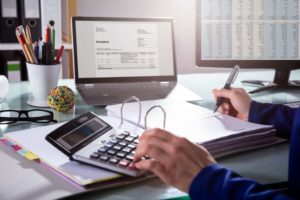
The same goes for real estate companies that hold buildings and land under their assets. Their office buildings and land are PP&E, but the houses or land they sell are inventory. Property, plant, and equipment basically includes any of a company’s long-term, fixed assets. PP&E assets are tangible, identifiable, and expected to generate an economic return for the company for more than one year or one operating cycle (whichever is longer).

How confident are you in your long term financial plan?
- Whether a portion of cash is used, or the asset is financed by debt or equity, how the asset is financed has an impact on the financial viability of the company.
- Plant assets are recorded at their cost and depreciation expense is recorded during their useful lives.
- PP&E may be liquidated when they are no longer of use or when a company is experiencing financial difficulties.
- Common plant assets are buildings, machines, tools, and office equipment.
- 11 Financial’s website is limited to the dissemination of general information pertaining to its advisory services, together with access to additional investment-related information, publications, and links.
PP&E represents assets that are key to the functionality of a business. Property, plant, and equipment (PP&E) are long-term tangible assets vital to business operations. The overall value of a company’s PP&E can range from very low to extremely high compared to its total assets.

Discover content
Compared to Exxon’s total assets of over $354 billion for the period, PP&E made up the vast majority of total assets. As a result, Exxon would be considered a capital-intensive company. Some of the company’s fixed assets include oil rigs and drilling equipment. For example, when purchasing a building for retail operations, the historical cost could include the purchase price, transaction fees, and any improvements made to the building to bring it to its destined use. The value of PP&E is adjusted routinely as fixed assets generally see a decline in value due to use and depreciation. The acquisition cost of a plant asset is the amount of cost incurred to acquire and place the asset in operating condition at its proper location.
Why learn how to account for property, plant, and equipment?

All of our content is based on objective analysis, and the opinions are our own. No, Property, Plants & Equipment is not considered a current asset as it has a useful life that extends beyond one year from the balance sheet date. Fixed assets lose value as they get older due to wear and tear, obsolescence, etc. Salvage value (also called scrap value or residual value) is the expected value a fixed asset will have at the end of its useful life. For the past 52 years, Harold Averkamp (CPA, MBA) hasworked as an accounting supervisor, manager, consultant, university instructor, and innovator in teaching accounting online.
- Long-term investments, such as bonds and notes, are also considered noncurrent assets because a company usually holds these on its balance sheet for more than one fiscal year.
- Although PP&E are vital to the long-term success of many companies, they are also capital intensive.
- We may earn a commission when you click on a link or make a purchase through the links on our site.
- Depreciation is an allocation process that ensures the useful life of an asset is properly identified from accounting and company valuation.
- When land and buildings purchased together are to be used, the firm divides the total cost and establishes separate ledger accounts for land and for buildings.
Plant assets are recorded at their cost and depreciation expense is recorded during their useful lives. Most businesses do not use the preceding PP&E classifications, because they are too broad. Instead, they use classifications that are more narrowly focused. Examples of these classifications are buildings, furniture and fixtures, land, machinery, and motor vehicles. Items grouped within a class are typically depreciated using a common depreciation calculation. Many items grouped into a PP&E class are assigned the same useful life for depreciation purposes.
- Sometimes a fixed asset may lose value which is not captured by the process of depreciation.
- PP&E are physical, tangible assets expected to generate economic benefits and contribute to revenue for many years.
- When purchasing a building for retail operations, the historical cost could include the purchase price, transaction fees, and any improvements made to the building to bring it to use.
- Owners record depreciable land improvements in a separate account called Land Improvements.
- After almost a decade of experience in public accounting, he created MyAccountingCourse.com to help people learn accounting & finance, pass the CPA exam, and start their career.
Depreciation of PP&E
The bookkeeper would record the transaction by debiting the plant assets account for $100,000 and crediting the cash account for the same. Industries or businesses that require a large number of fixed assets like PP&E are property, plant and equipment is sometimes called plant assets or described as capital intensive. The accountant debits the entire costs to Land, including the cost of removing the building less any cash received from the sale of salvaged items while the land is being readied for use.
